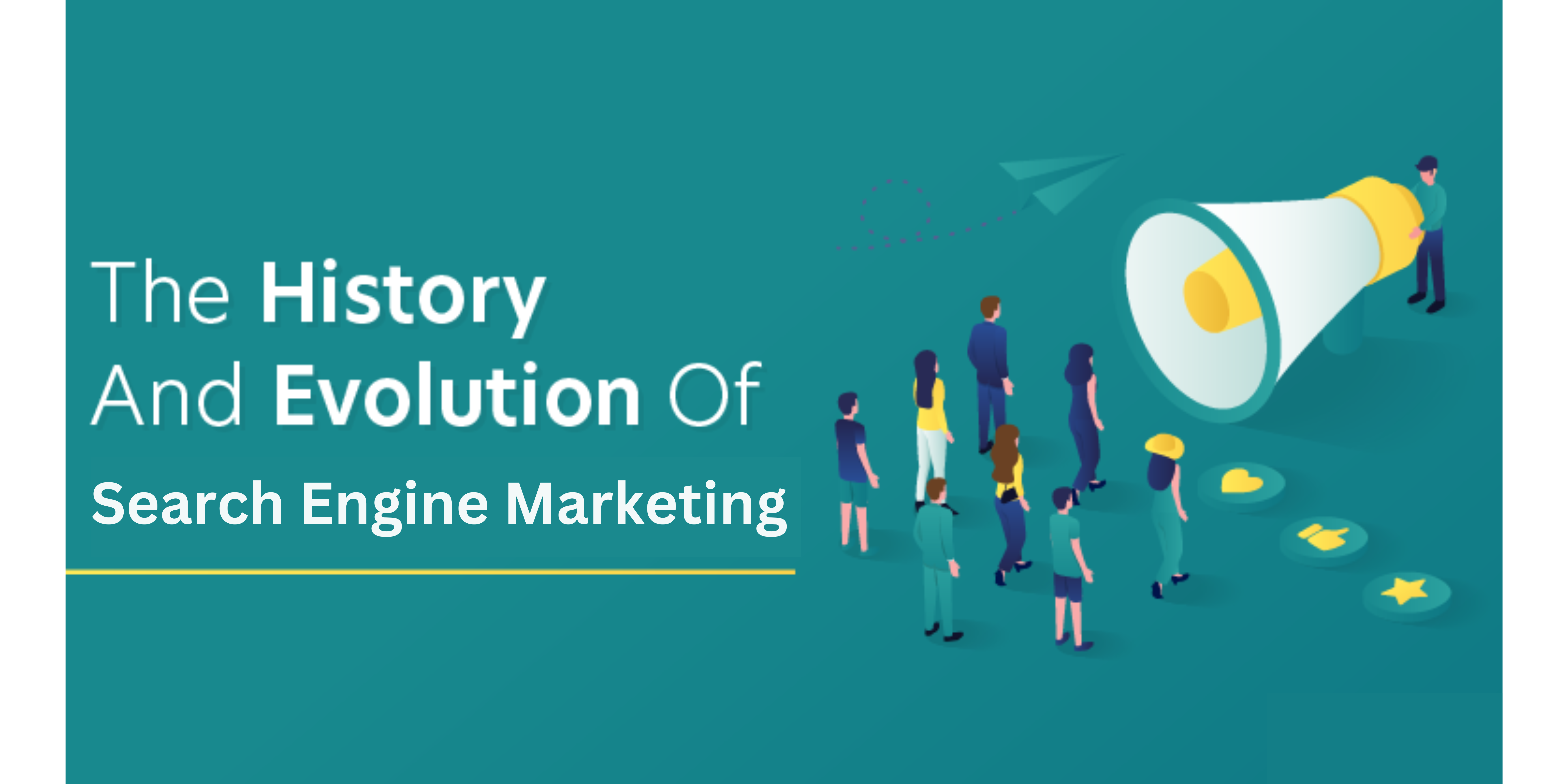Introduction to Search Engine Marketing (SEM)
Defining search engine marketing
Search engine marketing, often abbreviated as SEM, refers to the practice of promoting websites and increasing their visibility in search engine results pages (SERPs) through a combination of paid advertising and search engine optimization (SEO) techniques. It is a crucial component of digital marketing strategies as it helps businesses attract targeted traffic, generate leads, and maximize their online presence.

Evolution of SEM in the digital marketing landscape
Over the years, SEM has evolved significantly in response to the ever-changing digital marketing landscape. Initially, SEM primarily involved paid search advertising, commonly known as pay-per-click (PPC) campaigns. However, with the refinement of search engine algorithms and the growing importance of organic search results, SEO has become an integral part of SEM strategies.

Role of search engines in SEM
Search engines like Google, Bing, and Yahoo play a pivotal role in SEM. These platforms act as intermediaries between businesses and their potential customers by indexing and ranking websites based on various factors such as relevancy, authority, and user experience. By understanding the working principles of search engines, digital marketers can effectively optimize their websites and web contents to achieve higher visibility and attract quality traffic.
Understanding the Components of Search Engine Marketing
Search Engine Optimization (SEO)
The significance of organic search results
Organic search results refer to the unpaid listings that appear on search engine results pages (SERPs) based on their relevance to the user’s search query. Unlike paid search advertising, organic search results are driven by SEO efforts. They are highly valuable as they tend to receive more clicks and are considered as more trustworthy and authoritative by users.

Key SEO techniques and strategies
SEO involves a range of techniques and strategies aimed at enhancing a website’s visibility in organic search results. These can include optimizing website structure, improving page load speed, conducting keyword research and incorporating relevant keywords into website content, creating quality backlinks, and ensuring a positive user experience through user-friendly navigation and mobile responsiveness.
Paid Search Advertising (PSA)
Differentiating paid search ads from organic results
In contrast to organic search results, paid search ads are the sponsored listings that appear on search engine results pages (SERPs) above or alongside organic listings. They are primarily driven by pay-per-click (PPC) campaigns where advertisers bid on keywords or search terms and pay a fee every time their ads are clicked.
Popular paid search platforms and tools
Leading search engines like Google Ads, Microsoft Advertising, and Yahoo Gemini provide platforms for businesses to launch and manage their paid search advertising campaigns. These platforms offer various tools and features such as keyword planners, ad performance trackers, and budget management systems to help businesses optimize their PSA efforts and achieve maximum ROI.

Link Building and Content Marketing
Enhancing website visibility through quality content
Link building and content marketing are essential elements of SEM strategies. High-quality content is vital for engaging users, attracting backlinks from reputable websites, and improving website visibility in search results. By regularly creating and promoting relevant and informative content through blog posts, articles, videos, and infographics, businesses can establish themselves as industry authorities and increase their chances of ranking higher in search engine result pages (SERPs).
Building a strong backlink profile for better rankings
Backlinks play a crucial role in determining a website’s authority and credibility in the eyes of search engines. By acquiring quality backlinks from reputable websites and avoiding spammy link-building tactics, businesses can improve their rankings and organic traffic. Guest blogging, influencer outreach, and content syndication are some effective strategies to build a strong backlink profile.

The Benefits and Importance of Search Engine Marketing
Increased Website Traffic and Visibility
Attracting qualified traffic through targeted keywords
One of the primary objectives of SEM is to attract highly targeted traffic to a website. By optimizing web content and paid search ads with relevant and strategic keywords, businesses can ensure that their website appears in front of users actively searching for their products or services. This targeted approach increases the likelihood of attracting qualified leads and potential customers.
Rising above competitors in search engine result pages (SERPs)
With the fierce competition in the digital landscape, it’s crucial for businesses to stand out from their competitors. SEM allows businesses to outshine competitors by appearing higher in SERPs. Higher visibility not only increases the chances of attracting clicks from users but also instills trust and credibility, ultimately leading to better conversion rates and business growth.

Cost-Effectiveness and ROI
Budget flexibility in PPC campaigns
One of the key advantages of SEM, particularly in paid search advertising, is the flexibility it offers in terms of budget allocation. Businesses can set daily or monthly spending limits on their PPC campaigns, enabling them to control costs and optimize their advertising spend. This ensures that businesses of all sizes can leverage SEM effectively, regardless of their budget limitations.
Measuring and optimizing return on investment
Another significant benefit of SEM is its measurability. Digital marketers can track and analyze various metrics such as click-through rates (CTR), conversion rates, and cost per conversion to assess the performance of their SEM campaigns. By constantly monitoring and optimizing these metrics, businesses can refine their strategies, improve their ROI, and achieve better business outcomes.

Enhanced User Experience and Engagement
Aligning website design and content with user intent
Search engines prioritize user experience and relevance when ranking websites. SEM compels businesses to focus on optimizing their website design, navigation, and content to align with the intent of users’ search queries. A user-friendly website that provides valuable and engaging content not only attracts higher organic rankings but also improves user satisfaction and encourages repeat visits and conversions.
Utilizing data-driven insights to improve user experience
SEM campaigns generate a wealth of data and insights on user behavior, preferences, and interactions with a website. By analyzing this data, businesses can gain valuable insights into user intent, identify areas of improvement, and tailor their website, content, and overall digital marketing strategies to enhance user experience. This data-driven approach helps businesses make informed decisions and deliver personalized experiences to their target audience.

Best Practices for Effective Search Engine Marketing
Conducting Keyword Research and Analysis
Utilizing keyword research tools
Keyword research is a crucial first step in any SEM campaign. Various keyword research tools such as Google Keyword Planner, SEMrush, and Moz Keyword Explorer can assist businesses in identifying high-value and relevant keywords that align with their goals and target audience. These tools provide valuable insights into keyword search volume, competition, and potential performance, enabling businesses to make informed keyword targeting decisions.
Identifying high-value and relevant keywords
Effective keyword targeting is essential for improving website visibility and attracting targeted traffic. It involves identifying keywords that align with the user’s search intent and are relevant to the products or services offered by a business. By selecting high-value keywords with reasonable search volume and lower competition, businesses can increase their chances of ranking higher in SERPs and connecting with potential customers.

Developing Compelling Ad Copy and Landing Pages
Crafting persuasive ad copy to attract clicks
In paid search advertising, the ad copy plays a crucial role in enticing users to click on the ad. Effective ad copy is concise, relevant, and highlights the unique selling points or value propositions of a business. By incorporating persuasive language, compelling offers, or a clear call-to-action, businesses can increase their ad’s click-through rate (CTR) and maximize the chances of converting clicks into leads or sales.
Optimizing landing pages for conversions
A well-designed landing page is essential for converting clicks into leads or sales. An optimized landing page provides a seamless user experience and aligns with the ad’s messaging. By ensuring that the landing page delivers on the promise made in the ad and includes clear and compelling calls-to-action, businesses can improve the conversion rate and maximize the return on their SEM investment.

Monitoring, Analyzing, and Fine-tuning SEM Campaigns
Tracking metrics and KPIs to measure campaign performance
Effective SEM requires continuous monitoring and analysis of key metrics and key performance indicators (KPIs). Metrics such as click-through rates (CTR), conversion rates, average position, and quality score provide insights into the performance of a campaign. By tracking these metrics, businesses can identify areas of improvement, make data-driven decisions, and refine their SEM strategies to achieve better results.
Making data-driven adjustments to improve results
Data analysis should go beyond tracking metrics to actionable insights. By identifying trends, patterns, and valuable data points from SEM campaigns, businesses can make data-driven adjustments to optimize their campaigns further. This may include refining ad targeting options, adjusting bidding strategies, or revising keyword groups. Continuous optimization will help businesses improve their SEM performance and maximize their return on investment (ROI).

Challenges and Pitfalls in Search Engine Marketing
Dealing with Increasing Competition
Strategies to overcome fierce competition
The digital landscape is marked by intense competition, making it challenging for businesses to achieve prominent visibility in search engine results. To overcome and surpass competitors, businesses need to invest in well-rounded SEM strategies that focus on meticulous keyword research, compelling ad copy, and quality landing pages. Developing a unique value proposition, niche targeting, and exploring untapped marketing opportunities can further differentiate businesses from the competition.

Navigating dynamic search engine algorithms
Search engine algorithms are constantly evolving and becoming more sophisticated. What worked in the past may not yield the same results today. Businesses must stay informed about the latest algorithm updates and adapt their SEM strategies accordingly. By staying up-to-date with industry trends and best practices, businesses can maintain their visibility and rankings amidst changing search engine algorithms.
Adapting to Technological Advancements and Trends
Embracing mobile-first indexing and voice search
With the rise of mobile devices and voice assistants, businesses need to adapt their SEM strategies to cater to mobile-first indexing and voice search. Optimizing websites for mobile devices, ensuring fast-loading pages, and incorporating voice search optimization techniques can help businesses stay relevant and accessible to their target audience.

Capitalizing on emerging technologies like AI and machine learning
Emerging technologies like artificial intelligence (AI) and machine learning (ML) are reshaping the digital marketing landscape. SEM strategies can leverage AI and ML algorithms to automate keyword selection, optimize bidding strategies, and enhance ad targeting. By embracing these technologies, businesses can gain a competitive edge and capitalize on the efficiencies and insights they provide.
The Future of Search Engine Marketing in the Digital Age
Evolving role of SEM in a rapidly changing digital landscape
As the digital landscape continues to evolve, search engine marketing will remain a critical component of any successful digital marketing strategy. The role of SEM will expand beyond traditional search engines to include emerging platforms and technologies. Businesses will need to adapt and embrace new trends and technologies to stay relevant, target the right audience, and achieve their marketing objectives effectively.
Forecasted trends and developments in SEM
Forecasted trends suggest that mobile search, voice search, and video ads will continue to grow in prominence. Additionally, advancements in AI and machine learning will enable businesses to enhance targeting capabilities, automate campaign management, and deliver personalized experiences. Chatbots, augmented reality (AR), and virtual reality (VR) may also play a more significant role in SEM strategies as consumer preferences evolve.

Integration of SEM with other digital marketing channels
The future of SEM lies in its integration with other digital marketing channels such as social media marketing, content marketing, and email marketing. By leveraging cross-channel strategies, businesses can create a cohesive and comprehensive digital marketing ecosystem that maximizes reach, engagement, and conversions. Integration enables businesses to leverage the strengths of each channel while reinforcing brand consistency and messaging.
Key Takeaways
- Search engine marketing (SEM) involves a combination of SEO and paid search advertising to increase website visibility and attract targeted traffic.
- SEM provides benefits such as increased website traffic and visibility, cost-effectiveness, enhanced user experience, and engagement.
- Best practices for effective SEM include conducting keyword research, developing compelling ad copy and landing pages, and continuously monitoring and optimizing campaigns.
- Challenges in SEM include increasing competition and keeping pace with technological advancements.
- The future of SEM lies in its integration with other digital marketing channels, adaptability to emerging trends, and leveraging technologies like AI and ML.
Frequently Asked Questions
SEO focuses on optimizing a website’s content, structure, and backlink profile to improve organic rankings in search engine results. Paid search advertising involves bidding on keywords and displaying targeted ads on search engine results pages (SERPs) in exchange for a fee when the ads are clicked.
Search engine marketing (SEM) plays a crucial role in lead generation by attracting targeted traffic to a website. By targeting specific keywords and demographics, businesses can ensure that their ads or organic listings appear in front of users actively searching for their products or services.
Yes, SEM can be effective for small businesses with limited budgets. The flexibility of PPC campaigns allows businesses to set their own budgets, control costs, and optimize spending based on their objectives. With proper keyword targeting and optimization, small businesses can attract and convert leads effectively.
The decision to hire a professional SEM agency or manage SEM in-house depends on the business’s resources, expertise, and available budget. While managing SEM campaigns in-house is possible, professional agencies often have the expertise, industry knowledge, and tools to maximize the effectiveness of SEM efforts.
Conclusion
A successful digital marketing strategy necessitates the inclusion of search engine marketing (SEM). SEM encompasses a range of practices, including search engine optimization (SEO) and paid search advertising (PSA), as well as link building and content marketing. The importance of SEM lies in its ability to increase website traffic and visibility, provide cost-effectiveness and measurable ROI, enhance user experience and engagement, and ultimately drive business growth. By adhering to best practices, overcoming challenges, and embracing future trends, businesses can unlock the power of SEM and stay ahead in the competitive digital landscape.
